
There are moments when Death Stranding comes together and delivers an experience that lasts in the mind. There was one point when I was hiking through the mountains, my back weighed down with crates and boxes, forcing my character Sam to slowly wade through the waist high snow. The wind was whipping a whirl of white around me, and the icy temperatures were palpable. I was marching towards a cabin where I needed to make my delivery and in the sky ahead of me, framing it all, was a chiral vortex, a tornado streaked with purples and blues. It was a beautiful sight, made surreal by the fact I could see whales caught up and spinning in the storm.
Unfortunately, moments like that, while perfect for telling people about what makes Death Stranding special, don't illustrate what the bulk of the game is really like. They're sporadic dots in an otherwise messy, chore of a game.
In Death Stranding, mankind is on the verge of extinction after a series of cataclysmic events has left the world broken up into isolated pockets of humanity. What kicked it off were the void outs, something in the world changed making any person who died into a potential bomb, their bodies exploding if they weren't incinerated in time. Then came the BTs, ghostly figures that will grip and kill any living thing that gets in their way. And, on top of it all, is a strange phenomenon called Timefall - rain that speeds up time for anything it touches. Plants grow quickly, buildings crumble, and skin ages if caught out without an umbrella. All that's to say, it's a dangerous world to be a delivery man.
Advert
You play Sam Porter, one of the dedicated few keeping people connected in the new world, taking crates of medicine and food between outposts. But, at the start of Death Stranding, you're signed up for another mission by a group called Bridges. You're to set up the chiral network, essentially a superfast computer network that will span the US, letting connected outposts share data and communicate more easily. You need to visit each major outpost between the East and West coasts of America, setting up their network access and delivering parcels as you go.
That's about the sum of it. You're a delivery man/broadband engineer, walking all the way across America and getting paid in likes to do it. This future America doesn't bother with currency, claiming the endorphin rush of positive likes - like those on social media - is as good a reward as any.
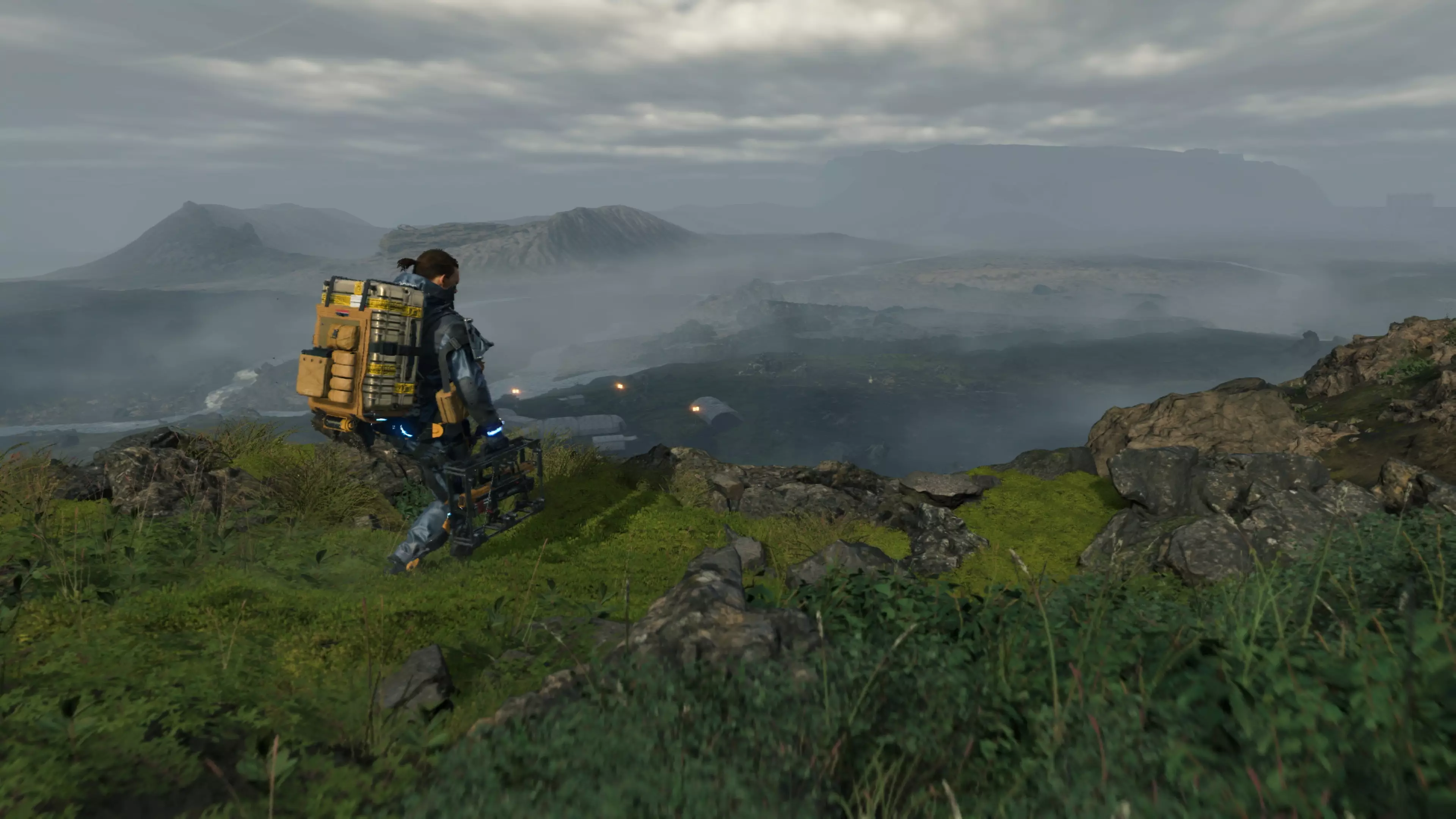
The focus on this simple task has been fleshed out significantly. Sam has endurance and stamina meters that deplete while doing strenuous activity, like climbing up slopes and wading through deep water. You can use the left and right triggers to grip the straps on your bag to keep your balance if you start tipping to the left or right. You'll pick up speed as you move down hill, making it hard to stop if you hit rough ground, where it becomes much easier to trip. Your balance is affected by how heavy your cargo is, how high it's stacked on your back, and how the weight is distributed across your body. The difference between carrying a stack of light boxes, a few heavy ones, and a non-rigid object like a body bag comes across in the way Sam responds to your controls. The term is often used as a negative, but this is pretty close to being a literal walking simulator.
Advert
As you progress across the continent, you'll get new gear that changes how you carry cargo. Exoskeletons increase your carrying capacity, running speed, and balance on rough terrain, for instance. You'll unlock floating carriers that you can leash to your belt. You can load them up like a hovering wheelbarrow and it will trail behind you. There are also vehicles, like the reverse trike, which you can load up with gear and speed towards your destination. However, in a world where Timefall has taken out all the roads, you'll often find your way blocked by rocks, ravines, and rivers. Rather than stop, you can always just try and force your vehicle over the obstacle. Using wheelies and jumps, your trike is surprisingly maneuverable but it does look like it's glitching the whole time as it bumps and jumps over rocks.

Dotted through the world you'll also find lost cargo that's been left by other porters as they made their journeys. You can collect these items and take them to their destinations for additional likes, or you can drop them off at waystations and post boxes for other characters to pick up and take the rest of the way. Though, you'll get fewer likes for taking something only part of its journey.
You don't spend the likes you amass, instead they increase your reputation at the recipient's location. So, if you deliver a lot of cargo to one place you'll increase your star rating and each time you go up a star you're rewarded with new gear or emotes. The team at Kojima Productions clearly has something to say about social currency on social media, though it's not entirely clear what that is.
Advert

Another threat in the world of Death Stranding are the MULEs, porters turned rogue. The MULEs have become addicted to delivering goods and receiving likes, but rather than complete jobs for people, they've found it's easier to simply steal cargo and deliver it to their own post boxes. They've built camps and patrol small regions of the map. If you enter their territory while carrying cargo then they'll hunt you down to steal it from you. They're an interesting facet of the world, but one that feels underdeveloped. It doesn't help that combat is so simplistic that early in the game you can just mash square to knock out any MULEs that get in your way, and later in the game you can simply shoot them with rubber bullets.
While MULEs can be beaten down or avoided, BTs are more of a challenge. This strange creatures, are left behind when people die. They congregate in areas under pockets of Timefall and they're looking to kill anyone who passes their way. The ghouls are mostly invisible, so you need to rely on your scanner to find them. When you're near a BT the mechanical scanning arm on your left shoulder perks up and points in the direction of the nearest enemy. The closer you get the more agitated its flashes and movements will become.
If you walk too close then the ground around you will become covered in a thick tar and out of the fluid will emerge the shapes of people. They'll try to grab at you and pull you under the surface. If they manage to take you under then you'll be transported to a nearby spot, the tar level will raise even higher, and you'll have to face a monstrous creature. These take the shape of whales with tentacle covered mouths, giant golden-faced cats, and other monstrosities.
Advert
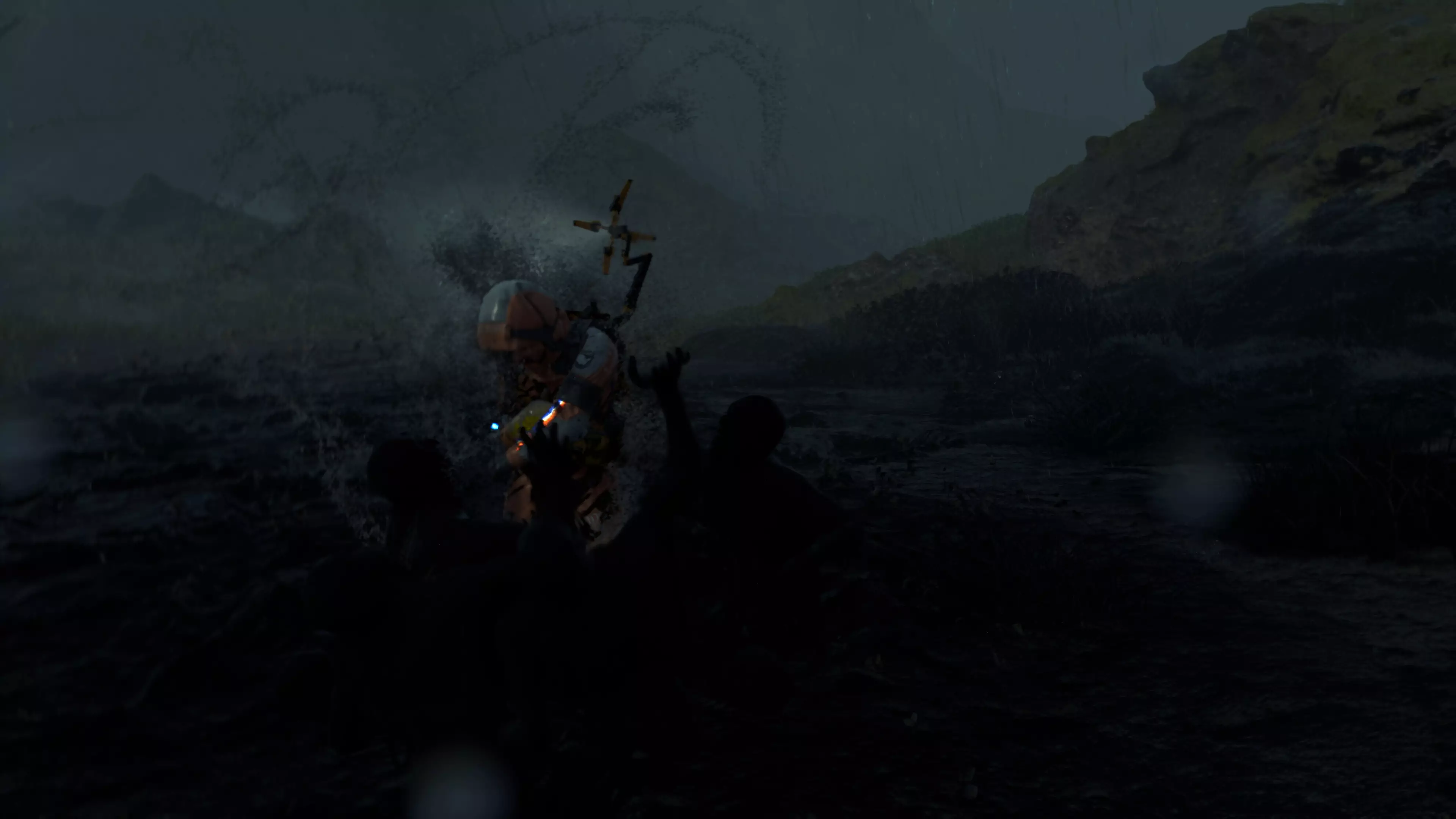
The BTs are vulnerable to your blood, so you'll fight back with weapons like hematic grenades, which release a cloud of the red stuff, sending any BTs caught within back to the void. Later in the game, you'll unlock other weapons to fight with, but they'll all draw from your own blood supply. Considering your blood is also your health bar, attacking makes you more vulnerable. You can hook up blood bags to Sam to give yourself a steady transfusion throughout a fight, but even then you can run so low on blood that Sam can no longer attack without becoming anemic.
There were points throughout Death Stranding where the simple act of travelling between points on its large map, ferrying cargo between outposts was fun. It's easy to become invested in the in-depth movement systems. However, these moments came fewer and further between as the game wore on. It took me 40 hours to complete the main story and there was a lot I left undone, but in every mission the objective boiled down to either taking a package from one place to another or going to a location, picking up the package there, and taking it somewhere else. Sometimes my route would go through BT or MULE territory, or the package I would be carrying would be particularly fragile, or there would be a time limit, but that was it.
As intriguing as the world and the story may be, it's that lack of variety that killed Death Stranding for me. When you get a message come through from headquarters and it's essentially "Well done for reaching 'x', now deliver parcels to 'y' so they'll join the network", I was always hoping for something new.
Advert
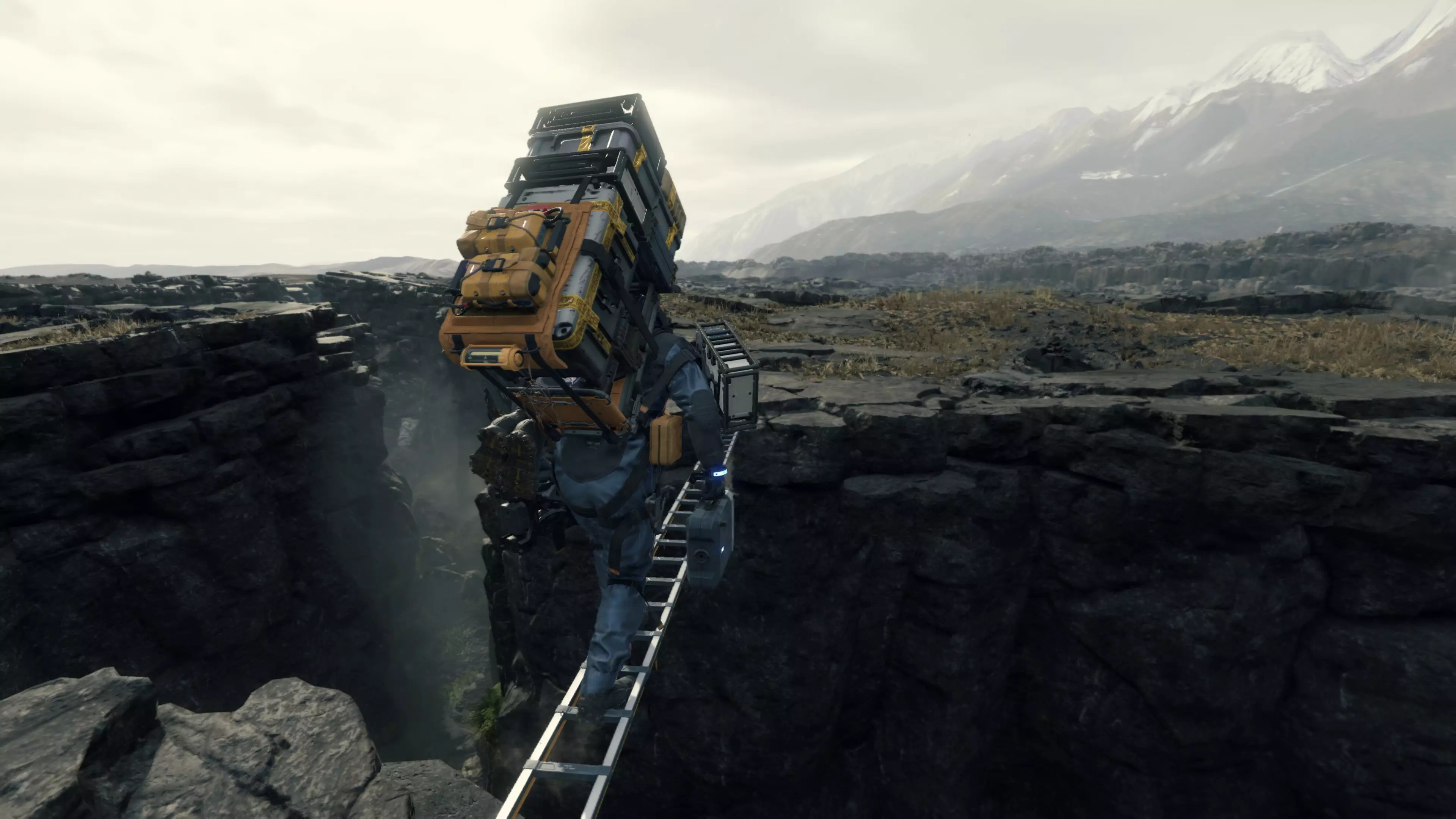
Something that does liven up the first half of the campaign is the impact you and other players have on the world. As you connect regions to the chiral network you gain the ability to place structures in their territory. At first, these are simple objects like post boxes, but later you unlock Timefall shelters where you can keep out of the rain and repair your cargo, power generators where you can recharge your exo-skeleton and vehicles, and even zipline posts to make traversing between two points much faster. Other players' structures will also appear in your world, giving you a sense of a much larger connected community. And you can like other peoples' buildings and they yours.
The change in the world I most enjoyed, but isn't developed far enough, are the AI porters. As you expand the network and create routes between settlements, other porters will appear in the world, making their own journeys between outposts. This detail makes the world seem like it's coming alive, like you are leading the emergence of a new way of life in these strange times. These AI porters will add resources to your structures, occasionally helping you build roads between settlements, and give you a cheery wave when you meet them out in the wild. However, this only appeared to happen in the first chunk of the campaign and as I progressed I stopped seeing porters altogether. It felt like a system that was half-finished.
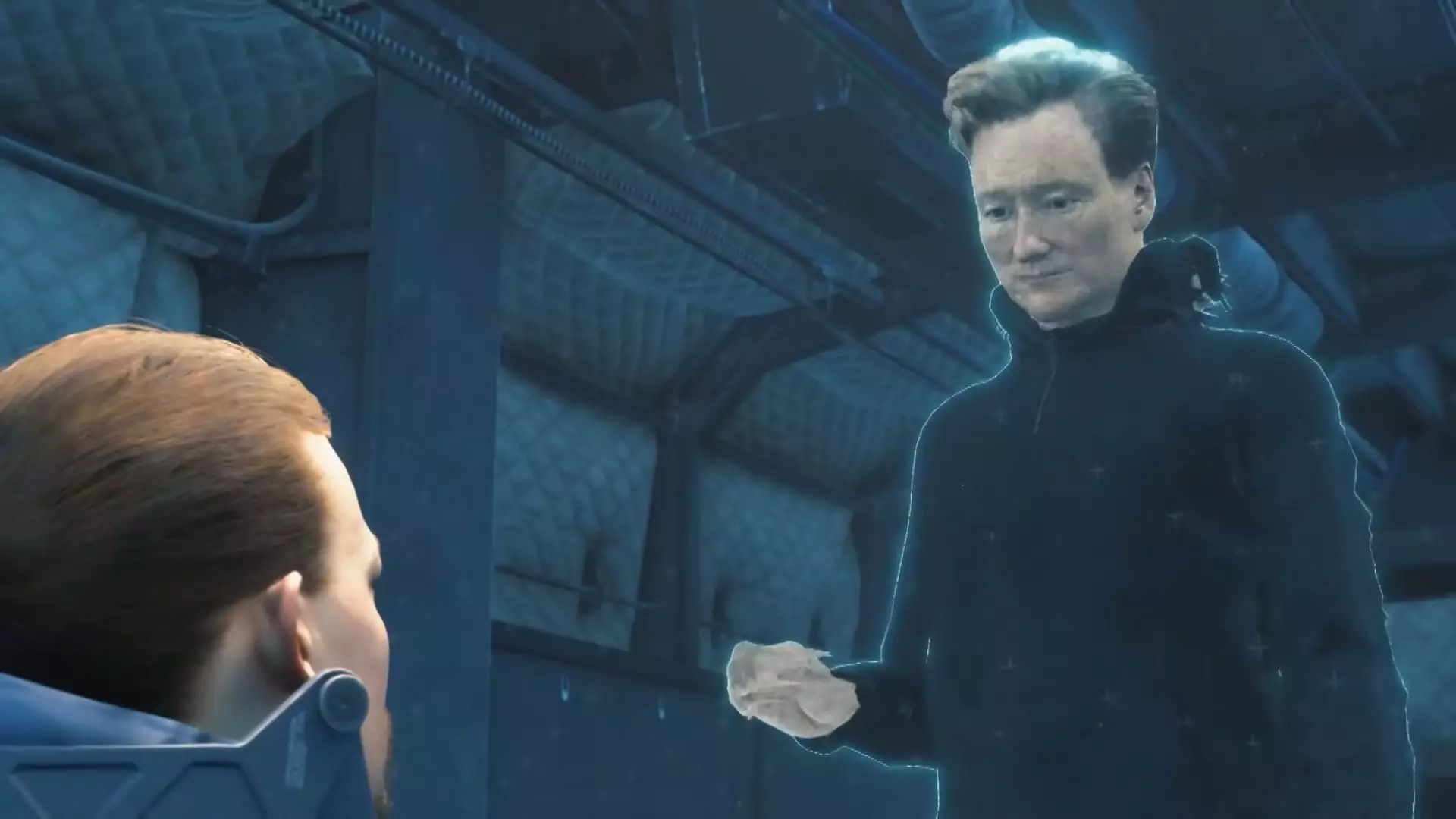
Carrying you through all these deliveries is the story of how the world got to this place and what people are doing to make it better. You'll meet the settlers you're delivering packages to - some played by familiar faces, like Conan O'Brien and Geoff Keighley - and you're directed in your mission by the members of Bridges who are behind the chiral network. They all have names like Deadman, Die-Hardman, and Mama, and they're played by famous actors or have the likenesses of famous directors, like Guillermo Del Toro, Léa Seydoux, and Margaret Qualley. They'll appear to you in holograms, or send you emails and essays to read. There's a lot of material to go through, but it all feels cold. You rarely meet people in the flesh - and only ever in cutscenes. Also, whether a directorial choice or a limit on Norman Reedus' availability, Sam rarely responds to the holograms talking to him, making most conversations one way. And while this has the effect of making you feel lonely and isolated, as I imagine it's supposed to, it also seems oddly cheap in an otherwise lavish game. You enter a city which supposedly has a population of 80,000 people, and you only ever see one hologram at the post office who tells you you did a great job on that last package, now go take this box of frozen sperm to the city 2km away.
In a similar way, while Mads Mikkelsen has featured heavily in the trailers for Death Stranding, he plays an odd role in the game itself. While his character appears throughout the game, he rarely interacts with anyone else. It's as though his involvement was written and recorded long before it was worked out how it would fit into the rest of the game. Where he does intersect with the game is in a number of boss fights which are mechanically identical, but just take place in different settings.
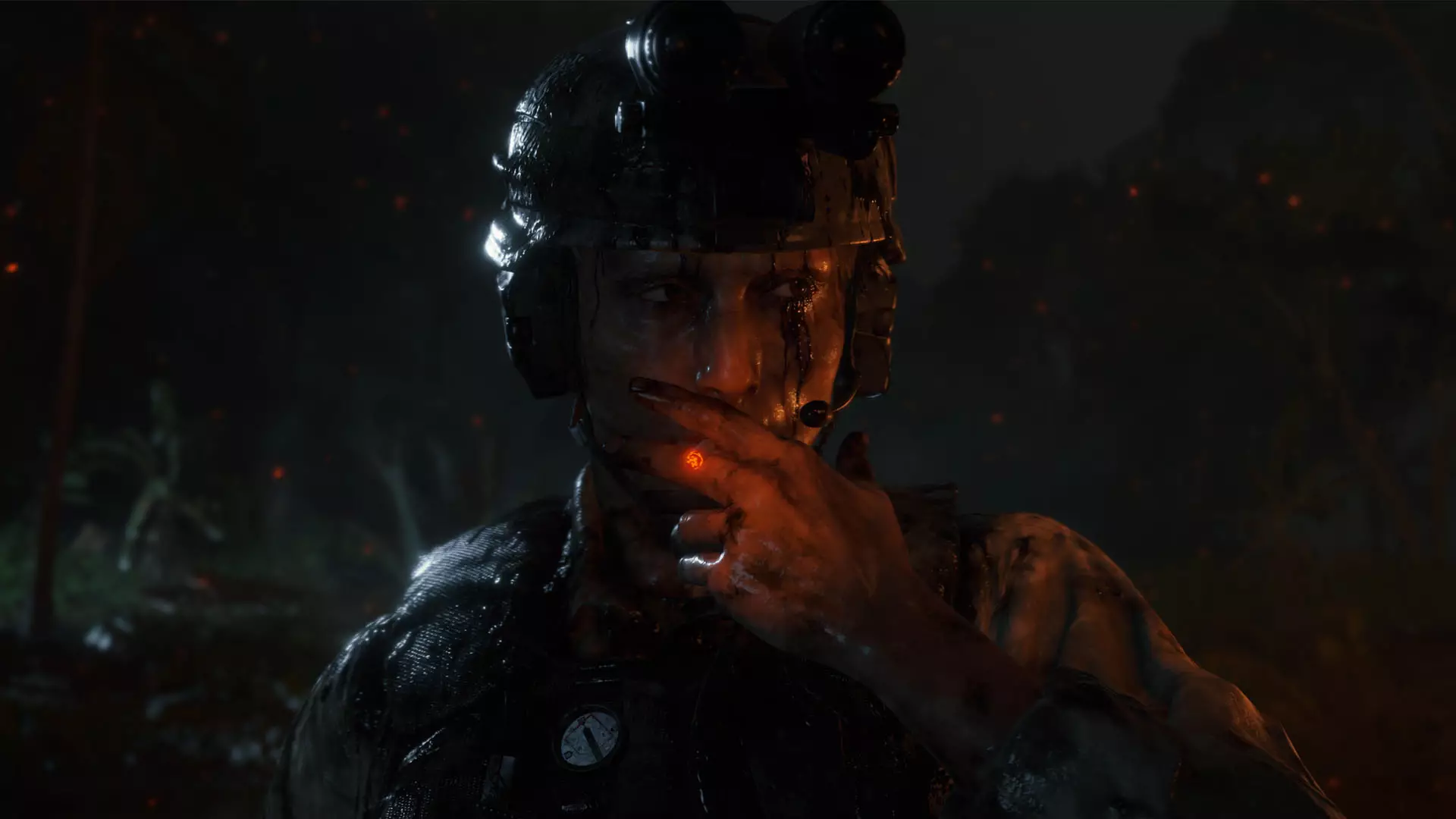
The story is a constant frustration throughout the game because it's delivered so messily. Characters tell each other things they should already know - early in the game, Sam is introduced to his own mother, for instance - while at other times fundamental parts of the world are left vague, like the events that led to Timefall and BTs flooding the world. The effect is that later in the game, as characters have seemingly significant scenes with each other we don't follow what is going on.
What makes this more frustrating, is that late in the game, characters spend 90 minutes in cutscenes simply telling you the story of what you've just spent 40 hours playing through. While these mean that when you get to the credit sequence you know what the story was, if that information had been woven in earlier it would have made the whole campaign more satisfying. You wouldn't then just be a confused fly on the wall but have actually cared about these characters and what they were going through. It has the effect of picking up a book and reading the last chapter with no idea of what's happened so far, you can just about follow events but there's no payoff to be enjoyed.
It's also not clear how well these ideas actually tie together. Timefall, cargo addiction, BTs, are all rich ideas but they don't feed into one another, giving the impression Death Stranding's world is a bag of concepts from a whiteboard, rather than a single coherent story. It's a mess, where it should be the force carrying you through a game, adding flavour to the otherwise extremely repetitive act of delivering packages.
I wanted to like Death Stranding. I'm a big fan of Kojima's previous games and I enjoy them for the mishmash of ideas they always are, and in theory I've no problem with playing a delivery man (I've put far too many hours into Euro Truck Simulator), but this game drowns its exciting systems and ideas with a messy execution and dragged out campaign. By stretching it out to such a long playtime, you can't escape Death Stranding's weaknesses - repetitive missions, simple combat, and a badly told story.
6/10
Featured Image Credit: Kojima ProductionsTopics: Review, Death Stranding, Kojima Productions